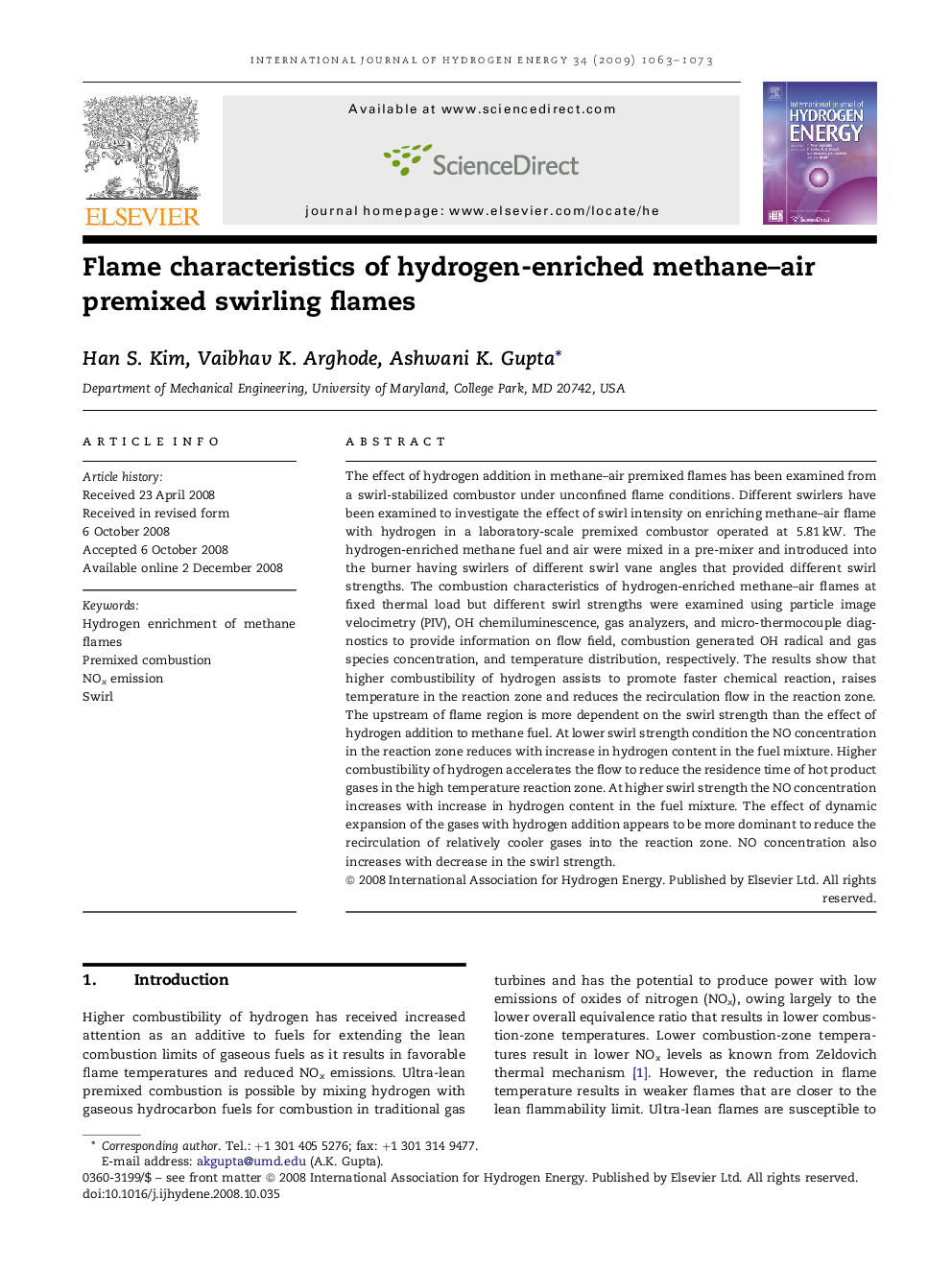| کد مقاله | کد نشریه | سال انتشار | مقاله انگلیسی | نسخه تمام متن |
|---|---|---|---|---|
| 1283491 | 1497640 | 2009 | 11 صفحه PDF | دانلود رایگان |

The effect of hydrogen addition in methane–air premixed flames has been examined from a swirl-stabilized combustor under unconfined flame conditions. Different swirlers have been examined to investigate the effect of swirl intensity on enriching methane–air flame with hydrogen in a laboratory-scale premixed combustor operated at 5.81 kW. The hydrogen-enriched methane fuel and air were mixed in a pre-mixer and introduced into the burner having swirlers of different swirl vane angles that provided different swirl strengths. The combustion characteristics of hydrogen-enriched methane–air flames at fixed thermal load but different swirl strengths were examined using particle image velocimetry (PIV), OH chemiluminescence, gas analyzers, and micro-thermocouple diagnostics to provide information on flow field, combustion generated OH radical and gas species concentration, and temperature distribution, respectively. The results show that higher combustibility of hydrogen assists to promote faster chemical reaction, raises temperature in the reaction zone and reduces the recirculation flow in the reaction zone. The upstream of flame region is more dependent on the swirl strength than the effect of hydrogen addition to methane fuel. At lower swirl strength condition the NO concentration in the reaction zone reduces with increase in hydrogen content in the fuel mixture. Higher combustibility of hydrogen accelerates the flow to reduce the residence time of hot product gases in the high temperature reaction zone. At higher swirl strength the NO concentration increases with increase in hydrogen content in the fuel mixture. The effect of dynamic expansion of the gases with hydrogen addition appears to be more dominant to reduce the recirculation of relatively cooler gases into the reaction zone. NO concentration also increases with decrease in the swirl strength.
Journal: International Journal of Hydrogen Energy - Volume 34, Issue 2, January 2009, Pages 1063–1073